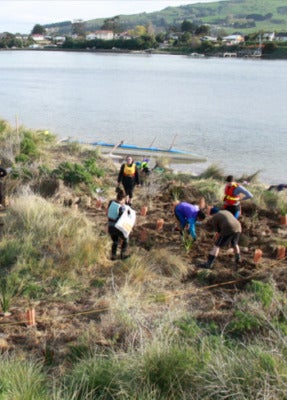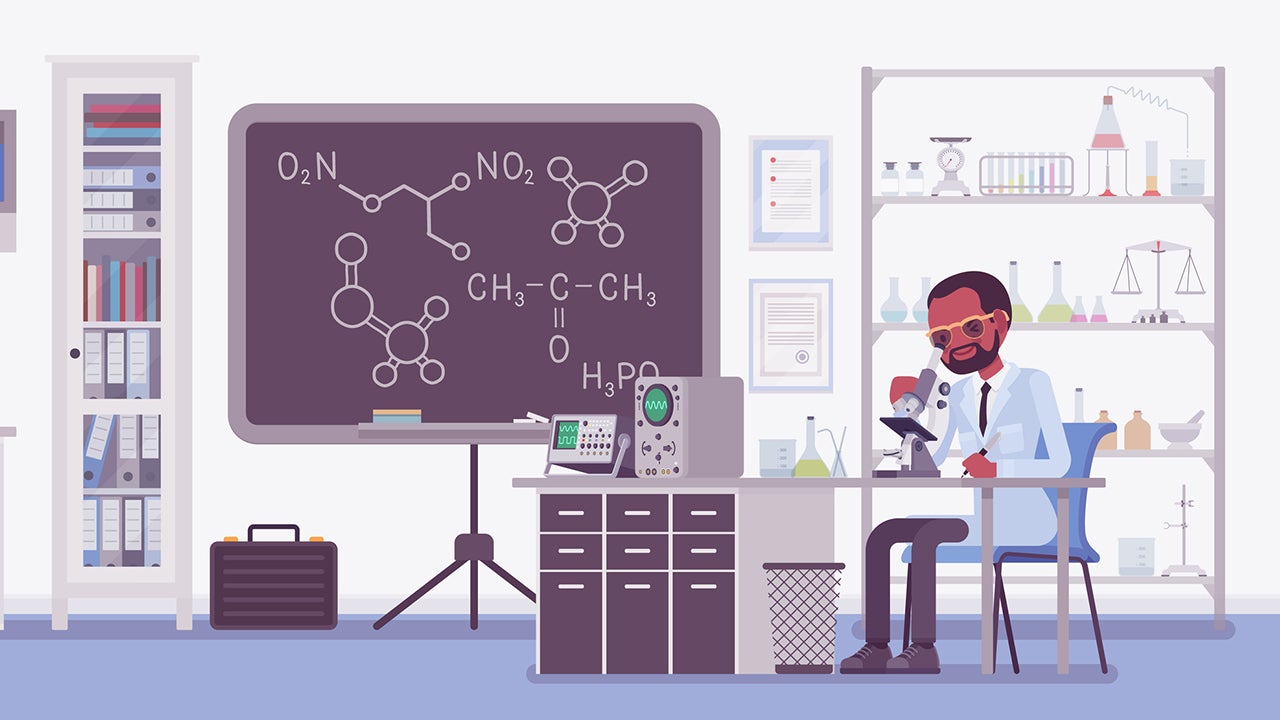Alexander von Humboldt was a naturalist and explorer. He traveled extensively in South America during the early 1800s and was one of the first people to describe humans’ role in climate change. Humboldt had a dream of uniting disparate communities through scientific observations. He was the first to establish a series of observing stations throughout the world, aimed at coordinating the global study of Earth’s magnetism. He built the foundation on which the modern scientific community, at its best, operates: free sharing of knowledge across the world.
Today, we need Humboldt’s vision more than ever. Our world faces climate change, species endangerment, and the destruction of natural resources and indigenous expertise. While professional scientists are conducting research to address these ruptures to the human and natural worlds, and while politicians and diplomats are working to construct and implement possible solutions, these efforts will only be successful if they involve free and open sharing of knowledge. This means that research and policy should reflect not only the best current science, but also the needs and values of the communities they are meant to serve.
All too often, though, the concerns of scientists or politicians can be out of step with communities on the front lines of conservation and other environmental issues. Even the most well-intentioned efforts can backfire without the appropriate buy-in from a community, and particularly without the appropriate respect for a community’s existing priorities and expertise.
To take one example, regulatory agencies in the United States set standards for safe levels of pollutants in the air, with the goal of protecting individuals from excessive exposure to harmful chemicals. These standards are a matter of particular concern for fenceline communities – those who live in close proximity to petrochemical facilities. These communities have noted that regulatory standards only take into account a subset of the potentially harmful chemicals released by these facilities, and some monitoring efforts rely on stations that are too far removed from these communities. This means that regulators – even if they are aiming to protect individuals as best they can – may be working with data that do not adequately reflect the day-to-day experiences or health concerns of individuals in these communities.
 Similarly, some efforts for environmental protection simply exclude local communities entirely, as in the recent announcement that actor Leonardo DiCaprio would donate $43 million to conservation in the Galápagos Islands. This impressive commitment is aimed at restoring species and habitats in this world-famous hotspot of biological diversity. Indeed, Galápagos can be seen as a major success story of conservation: 97% of the land and 100% of the ocean surrounding these islands are part of the National Park and Marine Reserve, and Galápagos retains 95% of its native biodiversity. But a more pressing problem in Galápagos is that nearly 35,000 people live there, and their choices about their lifestyles and their understanding of the fragility and uniqueness of their home will ultimately determine whether conservation efforts will be successful. Unfortunately, most residents of the Galápagos are only marginally involved with the historical and scientific study of these islands, and they often view science and conservation as disconnected from their lives, or worse, as impositions. Without engaging the people of Galápagos and without learning about their concerns and their understanding of conservation, efforts that focus only on species preservation or ecosystem health are eventually doomed to fail.
Similarly, some efforts for environmental protection simply exclude local communities entirely, as in the recent announcement that actor Leonardo DiCaprio would donate $43 million to conservation in the Galápagos Islands. This impressive commitment is aimed at restoring species and habitats in this world-famous hotspot of biological diversity. Indeed, Galápagos can be seen as a major success story of conservation: 97% of the land and 100% of the ocean surrounding these islands are part of the National Park and Marine Reserve, and Galápagos retains 95% of its native biodiversity. But a more pressing problem in Galápagos is that nearly 35,000 people live there, and their choices about their lifestyles and their understanding of the fragility and uniqueness of their home will ultimately determine whether conservation efforts will be successful. Unfortunately, most residents of the Galápagos are only marginally involved with the historical and scientific study of these islands, and they often view science and conservation as disconnected from their lives, or worse, as impositions. Without engaging the people of Galápagos and without learning about their concerns and their understanding of conservation, efforts that focus only on species preservation or ecosystem health are eventually doomed to fail.
The situations with air quality and with conservation in Galápagos are not unique; similar conflicts between local communities’ priorities and scientific or governmental efforts can be found the world over. To address this urgent issue, a new generation of scientists, entrepreneurs, and community leaders is working to create a more democratic model of science, following Humboldt’s dream. This model is known as community science: research that is developed, executed, and disseminated by a partnership of professional scientists and community members. While traditional scientific and policy work obviously still have important roles to play, community science provides a complementary and novel approach to thorny problems at the intersection between the human and natural worlds.
Our own work in the Galápagos Islands provides an example of how community science can both engage individuals at a deep level and generate the kind of scientific data necessary for supporting conservation efforts. One of our projects recruited high-school students on San Cristóbal Island to collect data about the endemic and endangered Galápagos Sea Lions (Zalophus wollebaeki), which share municipal beaches and other spaces with human residents. Although these sea lions are such an iconic part of local life that they are referred to as “the face of San Cristóbal,” the relationship between humans and sea lions is not always positive. Sea lions compete with people for space on beaches, and fishermen often see them as threats to their livelihoods, leading to cross-species aggression.
To learn more about how these sea lions’ behaviors might be altered by the presence of humans, our community scientists collected data twice weekly during three seven-month periods, documenting the sea lions’ social groupings, demographics, behaviors, and responses to a human’s approach. Together, we found that sea lions on beaches with more human disturbance were less likely to react aggressively to the approach of a human. However, sea lions on such beaches were forced to crowd together more closely, leading to more aggression among the sea lions. Further, using pre- and post-experience assessments of the community scientists, we found that their participation in this project led to increases in their understanding of the nature of science, their knowledge of sea lion biology, and their feelings of intrinsic motivation for engaging in conservation. An ongoing project similarly recruits students who are involved in a SCUBA diving club to collect data on the health of the underwater ecosystem that is adjacent to the town and to compare it to the ecosystem in protected areas. This approach of working with community members on projects of both local and scientific importance is imperative to protecting the unique ecosystems of the Galápagos.
 This community science approach also serves as a model of effective and inclusive conservation that can be adopted at other sites, as researchers and community leaders across the world work to merge conservation efforts with local knowledge, values, and priorities. To take one example, the Exchange for Local Observations and Knowledge of the Arctic (ELOKA) fosters collaboration between resident Arctic experts and visiting researchers to facilitate the collection, preservation, exchange, and use of local observations and Indigenous knowledge of the Arctic. In an effort to include the co-production of knowledge and a recognition of Indigenous data sovereignty, a recent project has been co-developing resources like place-name atlases, online databases, and websites; these data are then used to inform co-management of land and resources with the government. As another example, the He Pātaka Wai Ora Project in New Zealand focuses on identifying the areas of the Waikouaiti River where mahinga kai — natural resources that sustain life — has been most severely compromised by agriculture and other human modifications. Using multigenerational engagement, and with grounding in Māori language and traditions, this 200-year project aims to mitigate environmental harms from local industry and to restore pre-colonial levels of biodiversity to the river. Representatives of these projects and others recently came together in a workshop to continue building a global network for community science; a report on these discussions can be found here.
This community science approach also serves as a model of effective and inclusive conservation that can be adopted at other sites, as researchers and community leaders across the world work to merge conservation efforts with local knowledge, values, and priorities. To take one example, the Exchange for Local Observations and Knowledge of the Arctic (ELOKA) fosters collaboration between resident Arctic experts and visiting researchers to facilitate the collection, preservation, exchange, and use of local observations and Indigenous knowledge of the Arctic. In an effort to include the co-production of knowledge and a recognition of Indigenous data sovereignty, a recent project has been co-developing resources like place-name atlases, online databases, and websites; these data are then used to inform co-management of land and resources with the government. As another example, the He Pātaka Wai Ora Project in New Zealand focuses on identifying the areas of the Waikouaiti River where mahinga kai — natural resources that sustain life — has been most severely compromised by agriculture and other human modifications. Using multigenerational engagement, and with grounding in Māori language and traditions, this 200-year project aims to mitigate environmental harms from local industry and to restore pre-colonial levels of biodiversity to the river. Representatives of these projects and others recently came together in a workshop to continue building a global network for community science; a report on these discussions can be found here.
All of these projects demonstrate aspects of how scientific work can effectively be done with, by, and for local communities, bringing Humboldt’s vision to life. In line with this vision, both the IPCC and the United Nations Framework Convention on Climate Change (UNFCCC) recommend substantial efforts to build resilience and to begin adapting to our changing climate. But these efforts are necessarily local, since every community will be impacted differently by the effects of climate change, like sea level rise, higher temperatures, and disappearing fresh water. Combating these ecological issues will thus require deep engagement with local communities and reliance on their unique expertise. Community science can provide a framework for doing so, to the benefit of all.
DEENA WEISBERG is Assistant Professor in the Department of Psychological and Brain Sciences at Villanova University, where she directs the Scientific Thinking and Representation (STAR) Laboratory and co-directs the Galápagos Education and Research Alliance (GERA).
MICHAEL WEISBERG is Professor and Chair of Philosophy at the University of Pennsylvania, as well as Senior Faculty Fellow and Director of Post-Graduate Programs at Perry World, and co-directs the Galápagos Education and Research Alliance (GERA).
AARON F. MERTZ is a biophysicist and the founding director of the Aspen Institute Science & Society Program.


